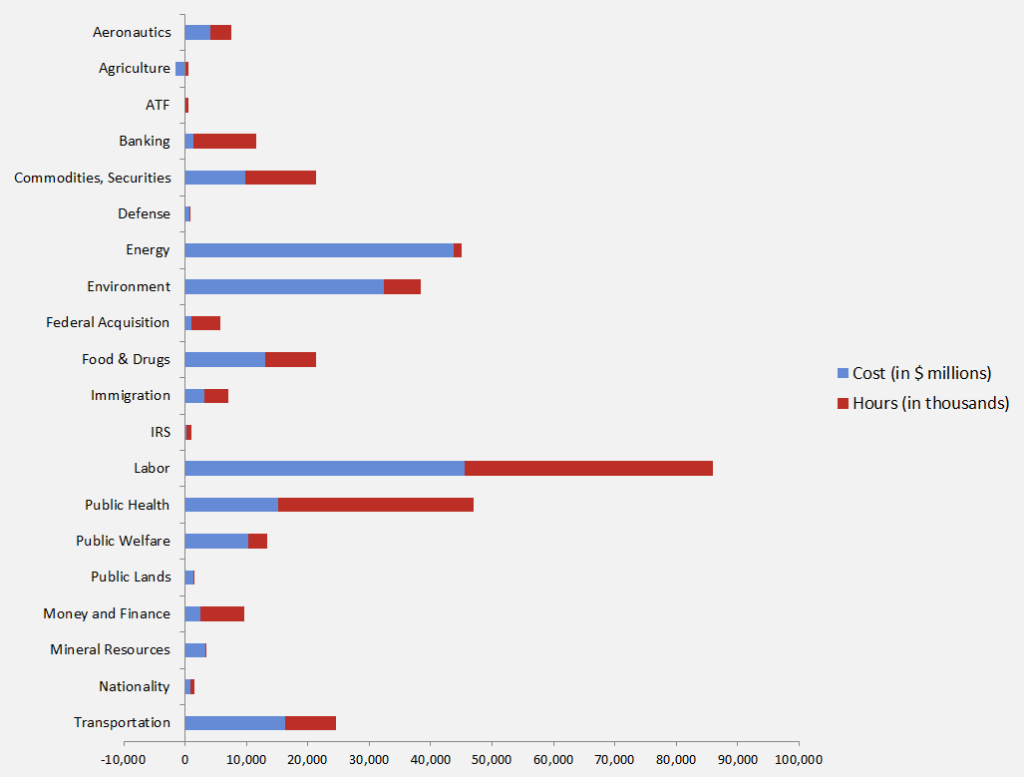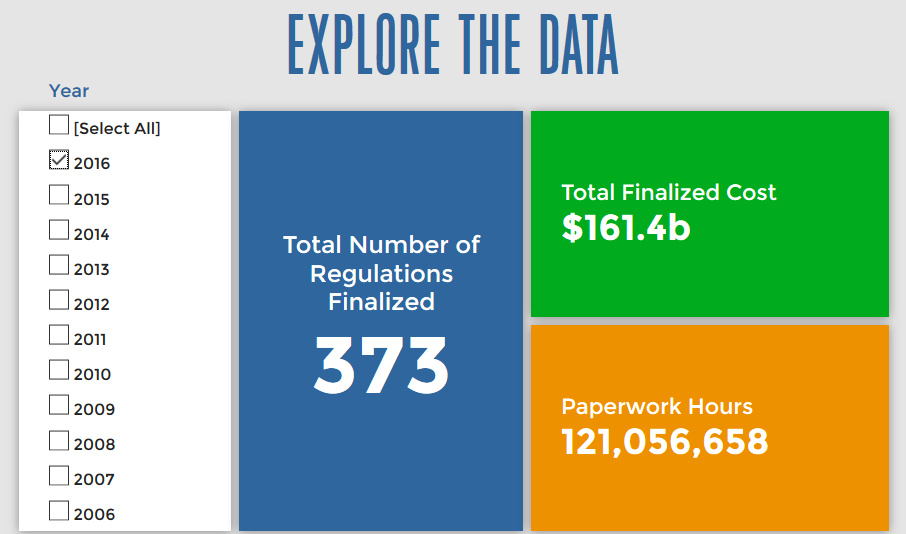Week in Regulation
December 19, 2016
$600 Million in Costs and 3.4 Million Hours
The White House released 18 regulations this week and regulators published $661 million in new regulatory costs. Combined with final rules that were proposed earlier this year, the total regulatory burden this week has exceeded $2 billion. Annual costs were $191 million, compared to $327 million in benefits; paperwork grew by 3.4 million hours. The per capita regulatory burden for 2016 is $638.
Regulatory Toplines
- New Proposed Rules: 50
- New Final Rules: 86
- 2016 Total Pages of Regulation: 91,642
- 2016 Final Rules: $161.4 Billion
- 2016 Proposed Rules: $45.4 Billion
The American Action Forum (AAF) has catalogued regulations according to their codification in the Code of Federal Regulations (CFR). The CFR is organized into 50 titles, with each title corresponding to an industry or part of government. This snapshot will help to determine which sectors of the economy receive the highest number of regulatory actions.
The largest regulation this week was EPA’s final Renewable Fuels Standard. At $1.5 billion in “illustrative” costs, even the agency admits it was not designed to capture the full impacts of the rule. EPA did not quantify, “infrastructure costs, job impacts, or investment impacts.”
The Department of Transportation (DOT) proposed a rule for security training for transportation employees. It would impose $157 million in total costs, but only $22 million in annual burdens. The measure requires training for “higher-risk” freight rail carriers, public transportation agencies, and over-the-road bus companies. In addition, DOT finalized its “Sounds for Hybrid” car rule. At $42 million, costs are somewhat low, even though the agency admits it will slightly reduce MPG performance of vehicles. Benefits from reduced accidents are estimated at $247 million.
EPA also finalized its emissions standards for wood products rule. The rule’s $105 million in total costs and $78 million in annual costs are paired against $79 million in benefits. However, the rule imposes more than 1.5 million paperwork burden hours.
Tracking Midnight Regulation
This week, OIRA received nine regulations, up from five last week; all but one were final rules. OIRA discharged 18 regulations, down slightly from 20 last week, with four economically significant measures. At its current pace, OIRA will set a record for regulatory output in the month of December during a presidential election year. Notable regulations released last week include:
- Vehicle to Vehicle Communication
- Modernizing HUD’s Consolidated Planning
- Protection of Visibility: Requirements for State Plans
For the month, OIRA has concluded review of 60 regulations, more than any other December during a midnight period. Throughout the year, OIRA averaged about two regulations per day; this rate has increased to 5.4 per day. Since the House has adjourned for the year, the carryover provision for the Congressional Review Act should begin on June 13, 2016. Once the House and Senate return next year, they will have until at least mid-May to review rules and vote on resolutions of disapproval.
Affordable Care Act
Since passage, based on total lifetime costs of the regulations, the Affordable Care Act has imposed costs of $51.6 billion in final state and private-sector burdens and 172.4 million annual paperwork hours.
Dodd-Frank
There were two Dodd-Frank rules this week, but they did not impose any notable costs. Click here to view the total estimated revised costs from Dodd-Frank; since passage, the legislation has produced more than 74.8 million final paperwork burden hours and imposed $36.5 billion in direct compliance costs.
Total Burdens
Since January 1, the federal government has published $206.8 billion in compliance costs ($161.4 billion in final rules) and has imposed 146 million in net paperwork burden hours (121 million from final rules). Click below for the latest Reg Rodeo findings.












